Planning for Life After Blood Clots: A Roadmap to Recovery and Beyond
One of the most important things I've learned after experiencing blood clots is that recovery goes far beyond just taking medication. It's about creating a holistic plan that addresses your physical, mental, and emotional well-being. It's about setting goals, building a supportive healthcare team, and navigating a complex medical system. And it's about making sustainable lifestyle changes that empower you to live a full and vibrant life.
Beyond Anticoagulation
While anticoagulants are essential for treating and preventing blood clots, they're only one piece of the puzzle. True recovery involves a holistic approach that addresses various aspects of your health and well-being:
- Lifestyle changes: Adopting healthy habits, such as a balanced diet, regular exercise, and stress management techniques, can significantly reduce your risk of future clots and improve your overall health.
- Mental health: Addressing anxiety, depression, or PTSD that may arise after a blood clot diagnosis is crucial for a full recovery.
- Social support: Connecting with others who understand your experience can provide emotional support and encouragement as you navigate your journey.
Planning with Faith
For me, planning also involves faith. It's about trusting that there's a bigger plan in place, one that doesn't intend to harm me, as Psalm 46:5 reminds us: "God is within her, she will not fall." This faith allows me to move forward without being paralyzed by fear.
Setting SMART Goals
Setting goals is a powerful way to stay motivated and on track with your recovery plan. Using the SMART framework can help you create goals that are:
- Specific: Clearly define what you want to achieve.
- Measurable: Set goals that you can track and measure your progress towards.
- Achievable: Choose goals that are challenging yet attainable.
- Relevant: Ensure your goals align with your values and overall health objectives.
- Time-bound: Set a timeframe for achieving your goals to provide a sense of urgency and accountability.
Examples of SMART goals for blood clot recovery and prevention:
- "I will walk for 30 minutes, five days a week, for the next three months."
- "I will incorporate two servings of leafy green vegetables into my diet every day this week."
- "I will practice mindfulness meditation for 10 minutes each morning for the next month."
Building Your Healthcare Team
A supportive and knowledgeable healthcare team is crucial for navigating your blood clot journey. Here are some resources to help you build your team:
- National Blood Clot Alliance: Find healthcare providers specializing in blood clot treatment and management.
- Physician Finders: Use online tools to search for doctors in your area and read reviews from other patients.
- Support Groups and Communities: Connect with other blood clot survivors and learn about their experiences with different healthcare providers.
Navigating the Healthcare System
The healthcare system can be complex and confusing, especially when dealing with a chronic condition like blood clots. Here are some tips for navigating the system and advocating for yourself:
- Prepare for appointments: Write down your questions and concerns beforehand.
- Bring support: Bring a trusted friend or family member to appointments for support and to help you remember information.
- Ask questions: Don't hesitate to ask your healthcare providers for clarification or further explanation.
- Seek second opinions: If you feel unsure about a diagnosis or treatment plan, don't be afraid to seek a second opinion.
- Know your rights: Understand your rights as a patient and advocate for yourself when necessary.
Implementing Lifestyle Changes
Making sustainable lifestyle changes can be challenging, but it's essential for reducing your risk of future blood clots and improving your overall health. Here are some tips:
- Start small: Begin with one or two small changes and gradually build from there.
- Find support: Connect with friends, family, or a support group to help you stay motivated.
- Make it enjoyable: Choose activities and healthy foods that you genuinely enjoy.
- Be patient: It takes time to develop new habits. Don't get discouraged if you don't see results immediately.
Overcoming Challenges
You might encounter challenges along the way, such as:
- Lack of support from family or friends
- Social pressures to engage in unhealthy habits
- Cultural norms around food and exercise
Remember, you are not alone. Seek support from your healthcare team, community, or online resources. Celebrate your successes, and don't be afraid to ask for help when you need it.
Call to Action
Take charge of your health and create a personalized plan for your blood clot recovery and prevention. Set goals, build your team, and embrace a lifestyle that supports your well-being. You are capable of achieving a healthy and fulfilling life after blood clots!
